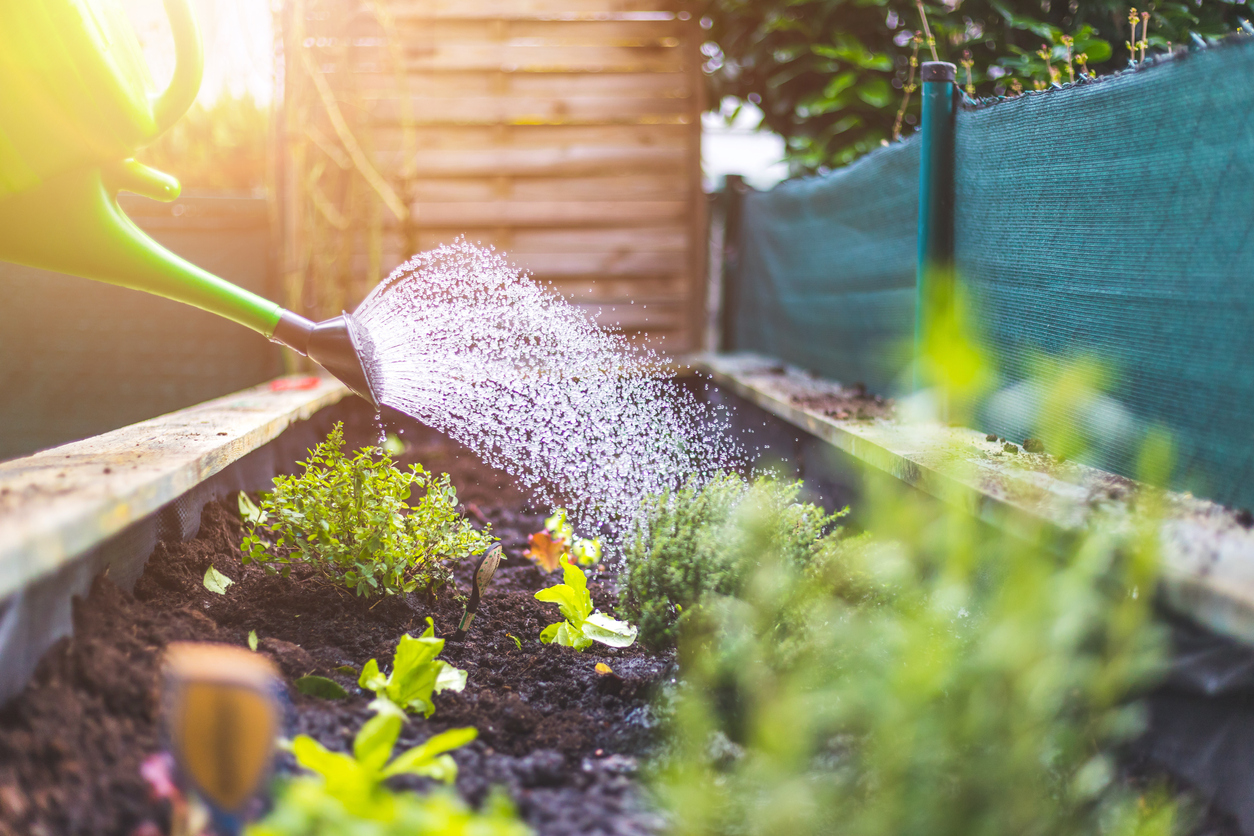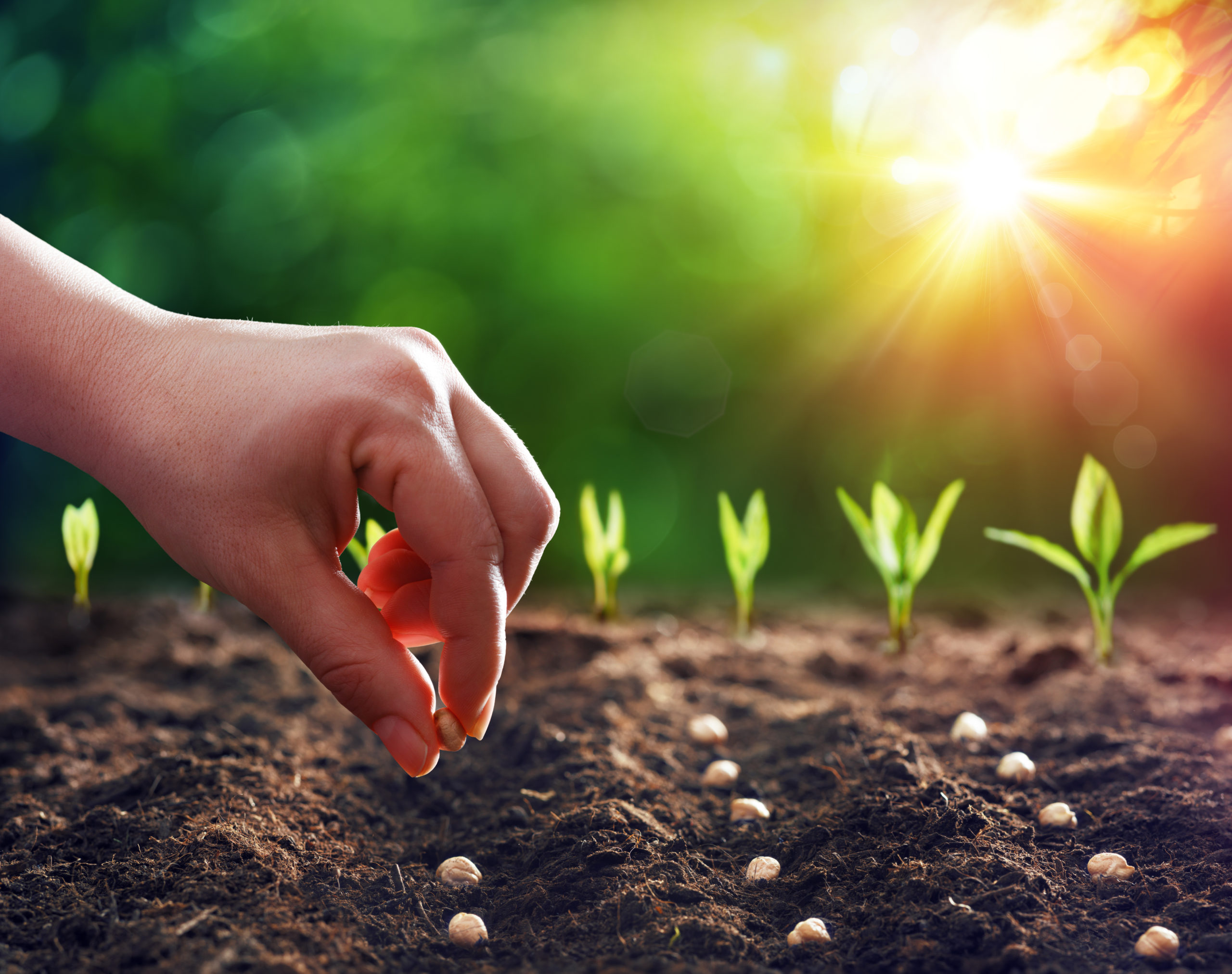
Now that you are the proud owner of an organic kitchen garden, it is crucial that you learn how to care for it. We at The Wine & Country Club will help you make the most of such a natural and enriching experience, and one that will bring you enormous benefits. Ensuring your kitchen garden grows healthy and strong is not particularly difficult, but there are a few knacks to getting the process right.
To get the best homegrown crops from your organic kitchen garden you need to make sure your soil is up to scratch. First thing to do is to clear all the weeds or plants or turf, and the next thing to do is improve the soil. You can do this by digging in organic matter, such as well-rotted manure or compost. The ideal soil is loose, crumbly loam, which absorbs and holds water and nutrients, is well aerated and drains freely.
To favour growth, it never hurts to give your potting soil a little boost by amending it with a little aged homemade organic fertiliser—think guano, green manure and compost, which you can make yourself by mixing sawdust, wood shavings, and fruit and vegetable waste (earthworms, fungi and oxygen will do the rest). Whether you are a compost queen or you have never had green fingers, you can turn your spoil into soil and cut down on household food waste. In addition, composting offers a 100% natural solution for soil fertilisation.
Grow what you love to eat. Make a list of your favourite edibles, then look carefully at your space and growing conditions and narrow your selection.
The concept of growing your own produce is beyond exciting and believe us, the want to start ALL the seeds and to plant all the veg will be strong, but you must resist. Start small and with experience you will be able to know what best suits the local soil, and what you and your space can take on for success. In addition to growing produce that is typical of the Malaga area, it is also important to start your kitchen garden at the right time.
Along with soil and sunlight, water is an extremely important part of your garden’s success. However, watering your vegetable garden can be tricky—water too much and some plants, like tomatoes and squash, will be more prone to disease and even start to look unhappy; water too little and vegetables like onions will not grow to their full size and you will end up with a puny harvest. As a rule of thumb, remember that vegetable crops are thirsty, so you will need to water them thoroughly, aiming to moisten at least 30 centimetres of the soil—this means a good, long soak about once a week, rather than quick and shallow daily watering. You will do well to water the plants at dawn or dusk in order to make better use of the water, harness the groundwater potential, and avoid burning the leaves due to the sun’s magnifying glass effect on water droplets.
A Few Extra Tips
Decide on the size of the plot—make sure you keep to a size you can manage. The amount of space and light levels of your chosen growing spot will be a determining factor, so it is important that you understand how much room you can offer each vegetable or fruit plant to grow. Treat plants a little like royalty—if they feel cramped, they may compete with each other for the same nutrients and they might not produce as well as they may have done. It is best to space your field crops properly and plant the same families of seed species together.

As you test out your green fingers, it is important that you get hold of the right gardening tools to tinker with. Your garden shed should at the very least include a small shovel, a rake and a hand hoe. Equally useful are a heavy-duty garden waste bag, gardening gloves, a motor hoe, and irrigation tools and accessories such as a hose, jet spray gun and watering can.
Spotting and dispatching pests can prove to be a major headache when tending your kitchen garden. If you are vegetable gardening in raised beds, the sides of the bed will act as a barrier to pests, such as snails and slugs, as well as pathway weeds. Also, it can be helpful to mix the plantings, as a large area of a single crop attracts pests, whereas the mix of different edibles and ornamentals confuses them. Grow climbers, such as peas, beans and cucumbers up tripods and frames, along with nasturtiums to attract blackfly away from crops, and sweet peas for added colour and scent. According to garden folklore, honeysuckle, lupine, foxglove, mint, calendula, basil, citronella, rue, sage, garlic, thyme or lavender are purported to drive away flying insects. You will do well to include companion plants that attract beneficial insects—think bees or ladybirds—such as marigolds, daisies and geraniums.




